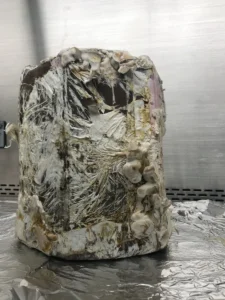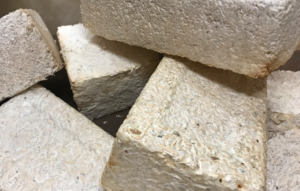Living on Mars. It’s a concept that has captivated humanity for centuries, fueling the imaginations of scientists, writers, and dreamers alike. But beyond the technological marvels needed to get us there, a more fundamental question arises: where will we sit on Mars?
This might seem like a trivial detail, but furniture design plays a crucial role in shaping our living spaces and impacting our wellbeing. Here on Earth, we’ve perfected the art of the chair, the couch, the bed furniture that caters to our physical needs and psychological comfort. But on Mars, with its harsh environment and reduced gravity, traditional furniture just won’t cut it. Chairs on Mars won’t just be furniture; they’ll represent the intersection of design, sustainability, and innovation required to thrive in an alien environment.
Let’s explore how the quest for Martian seating reflects our ingenuity and commitment to sustainable living.
The Challenges of Martian Furniture
Here are some key considerations:
- Reduced Gravity (38% of Earth’s gravity): Furniture designed for Earth’s gravity may be too bulky and cumbersome on Mars. Astronauts would find it difficult to move around and interact with overly heavy chairs or tables.
- Radiation Exposure: Martian furniture will need to provide some level of protection from harmful radiation, which is a constant threat on the Red Planet.
- Multifunctionality: Space will be a precious commodity on Mars habitats. Furniture will likely need to serve multiple purposes, transforming from a bed to a workspace or a dining table.
- Sustainability: Hauling furniture all the way to Mars is a logistical nightmare. Ideally, Martian furniture should be made from readily available materials or even recycled waste.

On the ISS, furniture takes a backseat to the realities of microgravity. Sitting is less a necessity than a challenge, and with no gravity to anchor you, the need for chairs diminishes. Astronauts float freely, using restraints only when necessary. While a small dining table exists, chairs are absent, and sleep occurs in sleeping bags secured to the walls.
The limitations of Mars also inspire innovation. Here are some ideas for Martian furniture design:
- Inflatable Furniture: Lightweight and easily transportable, inflatable furniture could be filled with Martian air or brought pre-inflated from Earth.
- 3D-Printed Furniture: Using Martian regolith (soil) as raw material, 3D printers could create custom furniture on-demand.
- Multifunctional Furniture: Imagine beds that convert into desks, chairs that fold into walls, or tables that adjust for different purposes.
- Biomimicry: Taking inspiration from nature, furniture could be designed to be lightweight yet strong, mimicking the structural efficiency of bones or plants.
NASA is exploring technologies that could grow structures out of fungi to become our future homes in the stars, and perhaps lead to more sustainable ways of living on Earth as well.

Credits: 2018 Stanford-Brown-RISD iGEM Team.
This project aims to create a self-growing habitat for space exploration. Dormant fungi within a lightweight structure are activated by water upon arrival at a destination like Mars. The fungi grow, forming a fully functional habitat while remaining contained, preventing environmental contamination.
Creating a habitable environment for astronauts beyond Earth requires more than just shelter. They need a complete living system, overcoming the challenges of harsh extraterrestrial conditions.
The myco-architecture project goes beyond building a simple structure; it’s about designing a complete habitat. This “home” will be a unique ecosystem, supporting human life alongside other organisms.
Just as astronauts require sustenance, so do the fungal mycelia. This is where cyanobacteria play a crucial role, utilizing sunlight to convert basic elements into oxygen and nutrients for the fungi, creating a self-sustaining cycle within the habitat.

Credits: NASA.
“When we design for space, we’re free to experiment with new ideas and materials with much more freedom than we would on Earth,” said Rothschild. “And after these prototypes are designed for other worlds, we can bring them back to ours.”
Surviving on the Moon and Mars demands radical innovation. We must shift from traditional construction to cultivating living structures and extracting resources from unexpected sources, like recycling waste into minerals. By drawing inspiration from the ingenious designs found in nature, we can create sustainable and environmentally friendly solutions. Fungi, with their remarkable adaptability, could be key to unlocking a future of bold and sustainable living, both on distant worlds and here on Earth.
Lessons for Life on Earth
The innovations driving Martian furniture design hold valuable lessons for life on Earth. They challenge us to think critically about how we use materials, the importance of sustainability, and the need to create adaptable, multifunctional living spaces. By drawing inspiration from these forward-thinking concepts, we can transform our own environments into more efficient, sustainable, and inspiring places to live.
Seating for a New Frontier
The question of where we’ll sit on Mars may seem small, but it’s a gateway to broader discussions about design, sustainability, and innovation. As we prepare for life on other planets, the solutions we develop will inevitably shape how we live on Earth. By embracing the ingenuity required for Martian furniture, we can create a future where every piece of furniture tells a story of resourcefulness, resilience, and respect for our environment whether we’re sitting on Earth or the Red Planet.
What do you think? How will we create a comfortable and functional living space on Mars? Share your ideas in the comments below!




 No products in the cart.
No products in the cart.